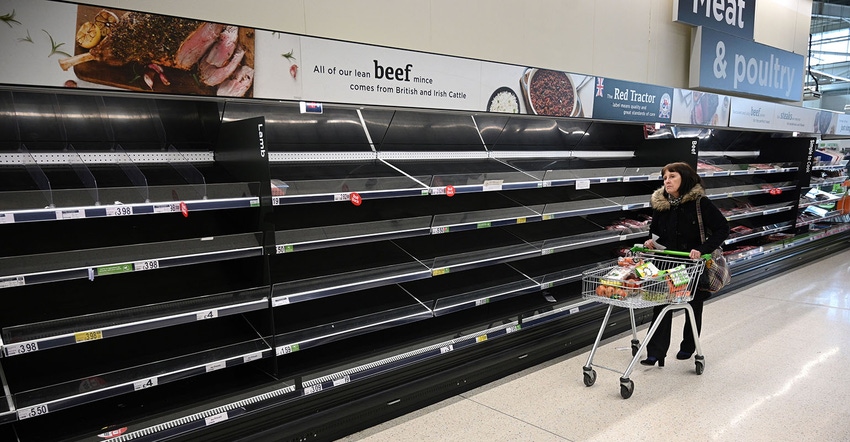February 16, 2021

A partnership between Purdue University, the Foundation for Food and Agriculture Research and Microsoft will create open-access online dashboards that can track and report the factors that could lead to food supply disruptions during national and global emergencies.
The dashboard is being created in response to the lack of information available during the early onset of the pandemic. As governments issued lockdown orders and stay-at-home advisories, grocery store shelves went bare as shoppers scooped up flour and yeast, canned goods, frozen vegetables, meats and any other staples that they were concerned could run out before they got the chance to return to the stores.
With few exceptions, there were no real concerns about food shortages in the United States, said Jayson Lusk, distinguished professor and head of Purdue’s Department of Agricultural Economics. However, there was no easy way for consumers or policymakers to know that since data that could be used to calculate the risk to the country’s food supply is spread piecemeal across multiple government agencies like the U.S. Department of Agriculture and the Bureau of Labor Statistics.
“The data are not always user-friendly for people unless you’re a specialist and know where to go to find it all,” said Jayson Lusk, distinguished professor and head of Purdue’s Department of Agricultural Economics. “There were disruptions for consumers that didn’t have to occur. In the early aftermath of that, I was part of a group brainstorming the types of information that needs to be accessible and what we can do to help the food and agriculture sectors, government and consumers understand what’s going on during an emergency. We believe these dashboards can help.”
FFAR is providing a grant for 221,743 to Purdue, with Microsoft matching those funds and supplying cloud technology, business intelligence, artificial intelligence and machine learning tools for the project. The total investment in the project is $506,743.
Related: Purdue University and Microsoft are collaborating on a tool that allows campus researchers to input information about how specific programs have been impacted
“The coronavirus pandemic has highlighted the need for easily accessible data on potential vulnerabilities in the food supply chain,” said Sally Rockey, executive director of FFAR. “This research is exposing those vulnerabilities in real time, providing policymakers and industry with the information needed to prevent bottlenecks and ensure food security.”
The work will build off the Purdue Food and Agriculture Vulnerability Index, which quantifies the potential risk to the supply of agricultural products because of farm and agricultural worker illnesses from COVID-19.
Related: Microsoft and Purdue are collaborating on several initiatives, including the Hoosier Food Market
“There are certainly still concerns about COVID, but the idea is to develop multiple dashboards on different topics so that we’re prepared to respond to a variety of issues that might come up during a large-scale emergency,” Lusk said. “With these new dashboards, we’ll integrate machine learning and make extrapolations to better estimate and predict disruptions in the food supply sector.”
One area where COVID-19 had devastating effects was food processing. As the number of infections grew, some beef and pork processing plants were operating at below 40% capacity. Lusk said dashboards will zoom in on the county level to show the percentage of residents who are sick and use machine learning to estimate the number of workers in a plant that may be affected or could be in the near future. That information can be useful to health officials and government agencies, who could shift resources to those areas or enact rules to counteract the problems.
The work also offers researchers data to identify the impacts of policy decisions during a pandemic or other type of large-scale emergency.
“These dashboards may give us the opportunity to understand how regulations impact food supply during a pandemic,” Lusk said. “That can help inform future decisions so that we can keep food flowing from areas of low demand to high and getting to the people who most need it in difficult times.”
Source: Purdue University, which is solely responsible for the information provided and is wholly owned by the source. Informa Business Media and all its subsidiaries are not responsible for any of the content contained in this information asset.
About the Author(s)
You May Also Like




